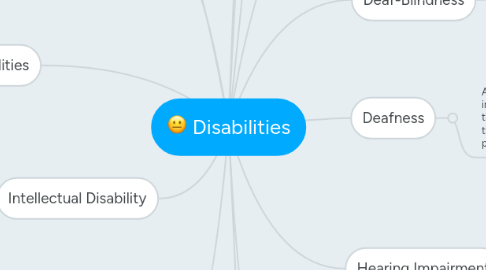Disabilities
作者:mike shelton


1. Developmental Delay
1.1. Children from birth to age three and children from ages three through nine the term developmental delay, as defined by each State, means a delay in one or more of the following areas: physical development; cognitive development; communication; social or emotional development; or adaptive [behavioral] development.
2. Emotional Disturbance
2.1. A condition exhibiting one or more of the following characteristics over a long period of time and to a marked degree that adversely affects a child’s educational performance:
2.2. (a) An inability to learn that cannot be explained by intellectual, sensory, or health factors.
2.3. (b) An inability to build or maintain satisfactory interpersonal relationships with peers and teachers.
2.4. (c) Inappropriate types of behavior or feelings under normal circumstances.
2.5. (d) A general pervasive mood of unhappiness or depression.
2.6. (e) A tendency to develop physical symptoms or fears associated with personal or school problems.
2.7. The term includes schizophrenia. The term does not apply to children who are socially maladjusted, unless it is determined that they have an emotional disturbance.
3. Intellectual Disability
3.1. Significantly subaverage general intellectual functioning, existing concurrently [at the same time] with deficits in adaptive behavior and manifested during the developmental period, that adversely affects a child’s educational performance.
4. Multiple Disabilities
4.1. Concomitant [simultaneous] impairments (such as mental retardation-blindness, mental retardation orthopedic impairment, etc.), the combination of which causes such severe educational needs that they cannot be accommodated in a special education program solely for one of the impairments. The term does not include deaf-blindness.
5. Speech or Language Impairments
5.1. A communication disorder such as stuttering, impaired articulation, a language impairment, or a voice impairment that adversely affects a child’s educational performance.
6. Orthopedic Impairment
6.1. A severe orthopedic impairment that adversely affects a child’s educational performance. The term includes impairments caused by a congenital anomaly, impairments caused by disease (e.g.,poliomyelitis, bone tuberculosis), and impairments from other causes (e.g.,cerebral palsy,amputations, and fractures or burns that cause contractures).
7. Specific Learning Disability
7.1. A disorder in one or more of the basic psychological processes involved in understanding or in using language, spoken or written, that may manifest itself in the imperfect ability to listen, think, speak, read, write, spell, or to do mathematical calculations. The term includes such conditions as perceptual disabilities, brain injury, minimal brain dysfunction, dyslexia, and developmental aphasia.
8. Autism
8.1. A developmental disability significantly affecting verbal and nonverbal communication and social interaction, generally evident before age three, that adversely affects a child’s educational performance.
9. Deaf-Blindness
9.1. Concomitant [simultaneous] hearing and visual impairments, the combination of which causes such severe communication and other developmental and educational needs that they cannot be accommodated in special education programs solely for children with deafness or children with blindness.
10. Visual Impairment Including Blindness
10.1. An impairment in vision that, even with correction, adversely affects a child’s educational performance. The term includes both partial sight and blindness.
11. Other Health Impairments
11.1. Having limited strength, vitality, or alertness, including a heightened alertness to environmental stimuli, that results in limited alertness with respect to the educational environment, (B) adversely affects a child’s educational performance.)
11.1.1. A. Is due to chronic or acute health problems such as asthma, attention deficit disorder, or attention deficit hyperactivity disorder, diabetes, epilepsy, a heart condition, hemophilia, lead poisoning, leukemia, nephritis, rheumatic fever, sickle cell anemia and Tourette syndrome.
11.1.2. B. adversely affects a child's educational performance.
